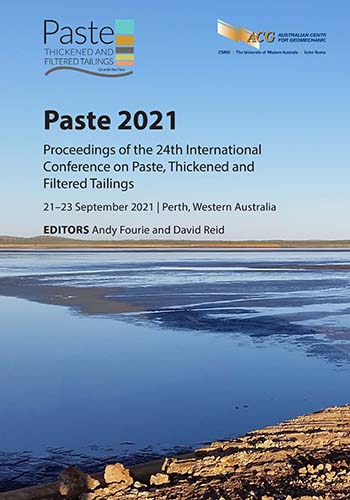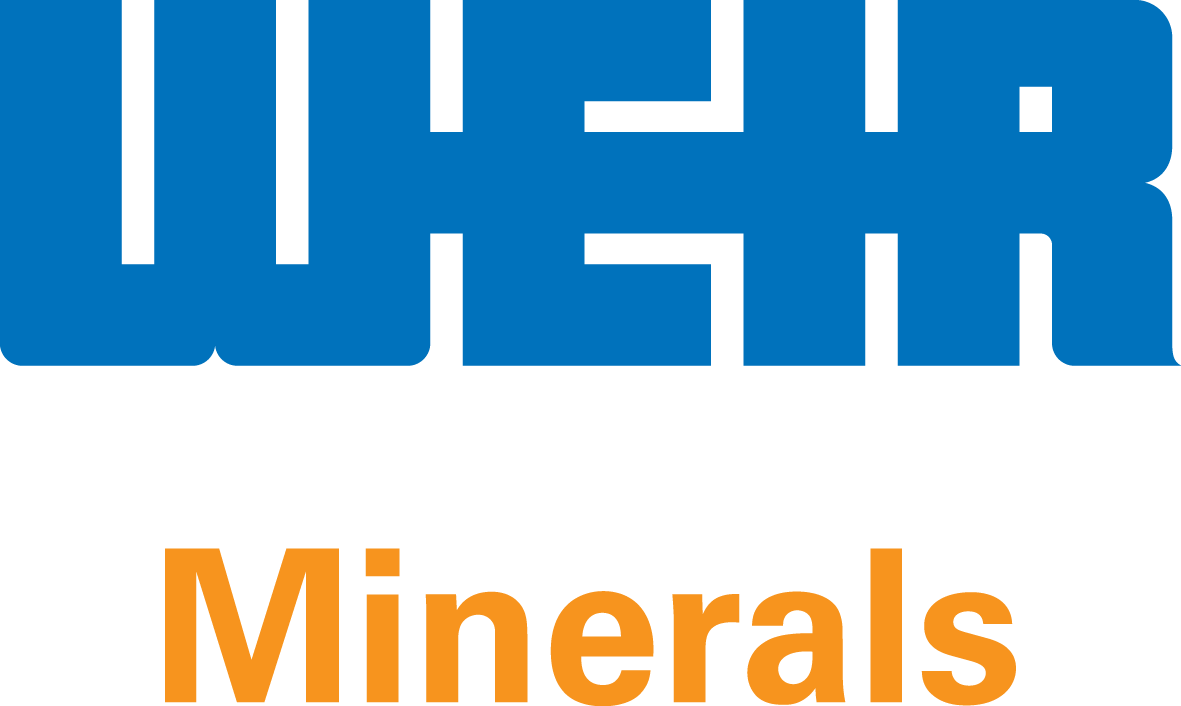Thickener feedwell internal trough slurry distribution method

|
Authors: Viduka, SM; Henriksson, B |
DOI https://doi.org/10.36487/ACG_repo/2115_07
Cite As:
Viduka, SM & Henriksson, B 2021, 'Thickener feedwell internal trough slurry distribution method', in AB Fourie & D Reid (eds), Paste 2021: Proceedings of the 24th International Conference on Paste, Thickened and Filtered Tailings, Australian Centre for Geomechanics, Perth, pp. 71-78, https://doi.org/10.36487/ACG_repo/2115_07
Abstract:
This paper presents a numerical and experimental investigation of an innovation in thickener feedwell technology. A feedwell plays a leading role in the robust operation of a thickener. Its multifunctional duties include slurry feed momentum dissipation, solids and liquor mass fraction preparation, flocculation, and symmetrical aggregate delivery to the tank. The testing of new concepts in the pursuit of developing a next generation feedwell presented an opportunity to create an improvement in process performance. An alternative method of using a feedwell trough, populated by a multitude of vertically directed nozzles, is adopted. These deliver slurry into a flocculation chamber before dispersing through an exit gap into the thickener tank. The trough most innovatively ensures flash mixing, and highly uniform solids dispersion inside the aggregate growth chamber. Initial examination adopted a multiphase Eulerian mathematical model to explore geometric configurations under various process scenarios. Numerical modelling indicated that when quantitatively compared to an equivalently sized diluting Vane Feedwell TM the design provides a large improvement in solids hold-up, mixing, exit distribution, and more. Modelling advanced to onsite testing of a non-diluting small 2 m diameter prototype in an industrial mineral processing plant. The retrofitted feed system improved thickener performance when compared to the preexisting feedwell and at a newly higher throughput duty. The first occurrence of a networked bed was observed, underflow densities improved by 6.5% w/w, flocculant consumption reduced by 5%, and overflow clarity largely improved. Underpinned by this positive result, modelling has shown even greater benefits may be found in application of the new technology to self-diluting feedwells.
Keywords: feedwell, flocculation, thickening, computational fluid dynamics, experimentation
References:
Fawell, PD, Farrow, JB, Heath, AR, Nguyen, TV, Owen, AT, Paterson, D, Rudman, M, Scales, PJ, Simic, K, Stephens, DW, Swift, JD & Usher, SP 2009, ‘20 Years of AMIRA P266 “Improving Thickener Technology” — How has it changed the understanding of thickener performance?’, in RJ Jewell, AB Fourie, S Barrera & J Wiertz (eds), Paste 2009: Proceedings of the Twelfth International Seminar on Paste and Thickened Tailings, Australian Centre for Geomechanics, Perth, pp. 59–68.
Jewell, RJ & Fourie, AB 2015, ‘Thickening’, in RJ Jewell & AB Fourie (eds), Paste and Thickened Tailings ‒ A Guide, 3rd edn, Australian Centre for Geomechanics, Perth.
© Copyright 2025, Australian Centre for Geomechanics (ACG), The University of Western Australia. All rights reserved.
View copyright/legal information
Please direct any queries or error reports to repository-acg@uwa.edu.au
View copyright/legal information
Please direct any queries or error reports to repository-acg@uwa.edu.au





